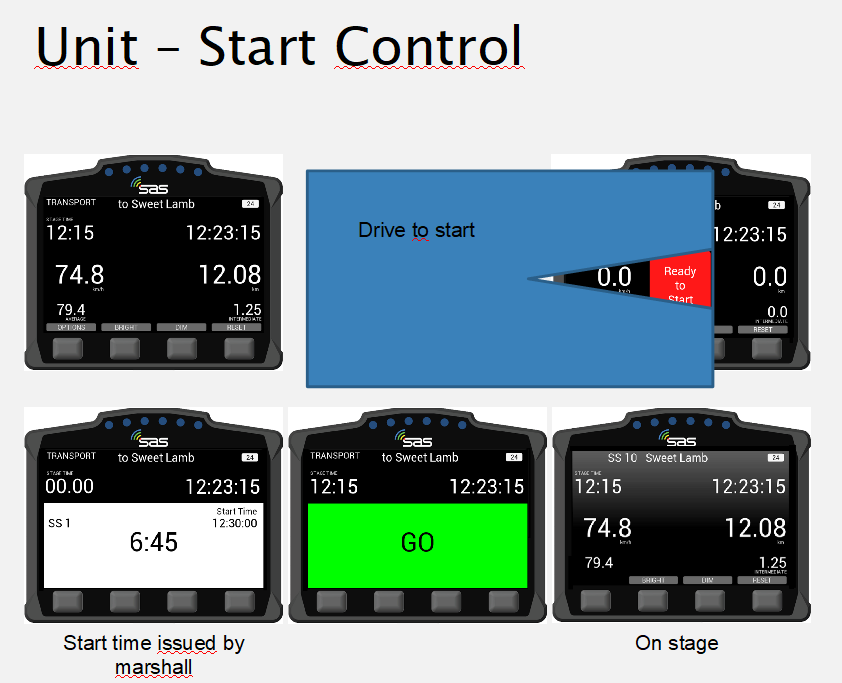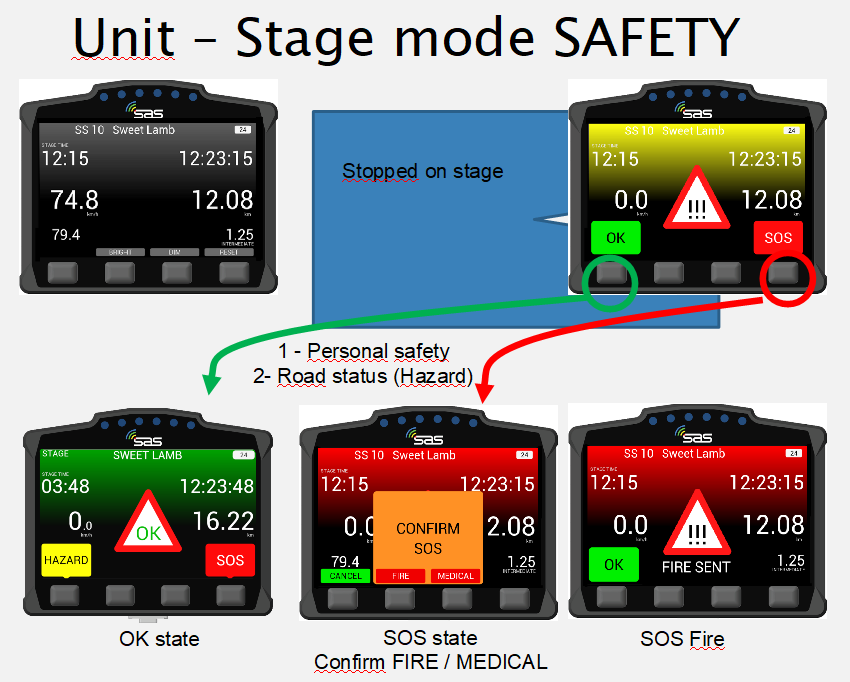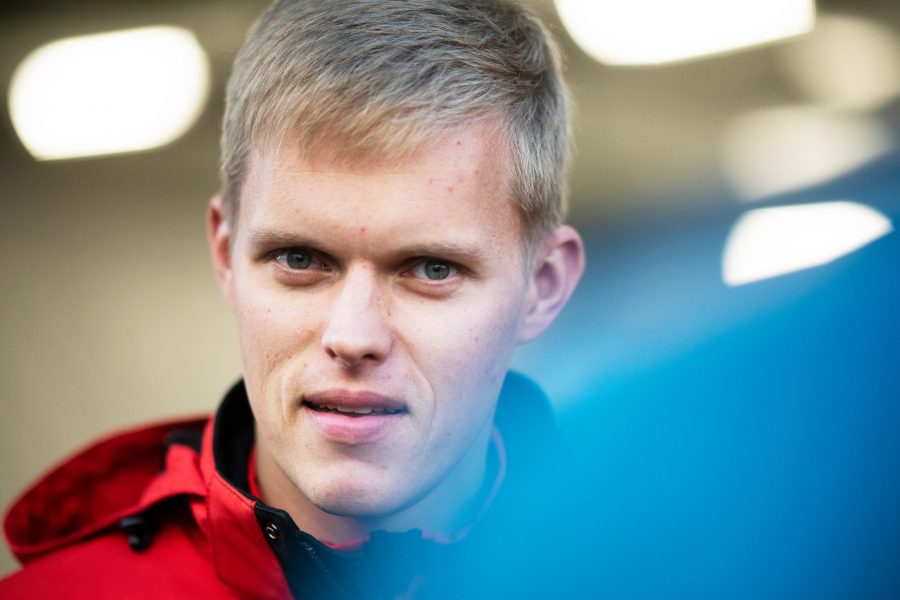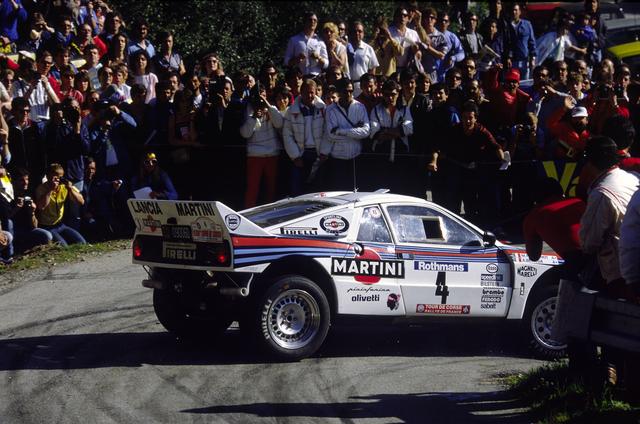SAS Tracker: Il ‘Grande Fratello’ del WRC. Come funziona il tracking GPS del Mondiale rally.
A Monte-Carlo abbiamo incontrato Status Awareness Systems, l'"occhio" della direzione gara su ogni evento.
Dei punti che si spostano su una mappa con dei numeri: ecco come si vede il lavoro di satelliti, di un team di 10 persone schierato per ogni evento del WRC e di una piccola ‘scatoletta’ nera con uno schermo. Status Awareness Systems è l’azienda che si occupa del tracking GPS di ogni vettura iscritta ad un round del Mondiale Rally: con Rally Safe, il dispositivo da loro ideato la direzione di gara è in grado di monitorare la velocità durante le ricognizioni del percorso, eventuali stop delle vetture durante le PS e segnalare la necessità dell’intervento dei soccorsi.
A Monte-Carlo abbiamo parlato con loro per farci spiegare come funziona e quali sono le sue peculiarità.
Ricognizioni prima delle ricognizioni
Due giorni prima delle ricognizioni ufficiali degli equipaggi” spiega Alejandro Rodriguez de Cabo, Rally Manager dell’azienda” siamo già presenti in campo gara: abbiamo circa 10 persone in loco (più 2 da remoto in Australia) che controllano ed assistono i commissari ai C.O. a alle partenze PS.
Svolgiamo anche noi le ricognizioni delle prove speciali così da marcare con più precisione i punti GPS che verranno poi usati in gara entro meno di 12 metri (il sistema ha una accuratezza ancora maggiore).
Sistema totalmente integrato
Il vantaggio del nostro sistema” parla Michael Harmsen, Recce and Race control manager presente in campo gara” è che è completamente integrato: possiamo fornire anche il servizio di cronometraggio, dato che abbiamo (ovunque nel mondo a parità di segnale satellitare) uno scarto ridottissimo se comparato con i tempi rilevati tramite fotocellule. Inoltre ci integriamo anche con WRC+ All Live, per mostrare al pubblico dove sono posizionati i concorrenti, sia in trasferimento che in prova.
Un altra caratteristica è che possiamo configurare il sistema anche per i Rally Raid, includendo slow zone e tutte le caratteristiche che queste gare hanno a differenza dei rally.

In caso di emergenza…premi il bottone
Il nostro principale ruolo è quello che riguarda la sicurezza, sia degli spettatori che degli equipaggi, “prosegue Alejandro.” Michael è presente in direzione gara e da informazioni al direttore di gara sui dati registrati dalla vettura che ha un incidente come forze G, velocità, posizione, ecc.
RallySafe permette una comunicazione concorrente-direzione gara, ma anche concorrente-concorrente in alcuni campionati, “aggiunge Michael.”
Ogni volta che il sistema percepisce uno stop dell’auto, compare l’indicazione per l’equipaggio di indicare se si tratta di un incidente e se hanno bisogno di aiuto; dai dati che menzionavamo prima si riesce a capire se si tratta di un vero e proprio incidente oppure di una dimenticanza da parte dell’equipaggio. Questo è molto importante per tutte le vetture che sono sprovviste di telecamere a bordo.
In alcuni campionati se una vettura è ferma sul percorso, ai concorrenti che seguono viene chiesto se ostruisce la strada o se necessita di aiuto.

______________________________________________________________________________________________________________________________________________________
Dots moving around on a map with a number each: that’s how you see the work of satellites, a 10-strong team deployed to each WRC event and a little black box with a screen.
Status Awareness Systems is the company responsible for the GPS tracking of every car entered in a round of the World Rally Championship: with Rally Safe, the device they have devised, the race management can monitor speed during reconnaissance of the route, any stops made by the cars during the SS and signal the need for help.
Speaking to us are Alejandro Rodriguez de Cabo, Rally Manager, and Michael Harmsen, Electrical Engineer and interface with the race direction.
Reconnaissance before the reconnaissance
Two days before the official reconnaissance of the crews
explains Alejandro Rodriguez de Cabo, Rally Manager
we are already present on the course: we have about 10 people on site (plus 2 on remote in Australia) to control and assist the marshals at the O.C. and the PS starts.
We also carry out reconnaissance of the special stages in order to mark with more precision the GPS points that will be used during the race within less than 12 meters (the system has an even higher accuracy).
Fully integrated system
The advantage of our system
says Michael Harmsen, Recce and Race Control Manager
The advantage of our system, as Michael says, is that it is fully integrated: we can also provide a timing service, as we have (anywhere in the world with the same satellite signal) a deviation of a very little fraction if compared to the times measured by photocells. We also integrate with WRC+ All Live, to show the public where the competitors are positioned, both in transfer and in practice.
Another feature is that we can also configure the system for Rally Raids, including slow zones and all the features that these races have unlike rallies.
In case of emergency … press the button
Our main role is one of safety, for the crews side,
continues Alejandro.
Michael is present at the race direction and gives information to the race director about the data recorded by the car having an accident such as G-forces, speed, position, etc.
RallySafe allows a competitor-race direction communication, but also competitor-to-competitor in some championships,
adds Michael.
Every time the system detects a stop of the car, an indication appears for the crew to indicate if it’s an accident and if they need help; from the data mentioned earlier, it is possible to understand whether it was an actual accident or whether the crew forgot. This is very important for all cars that do not have on-board cameras.
In some championships if a car is stationary on the course, the following competitors are asked if they are obstructing the road or need help.

